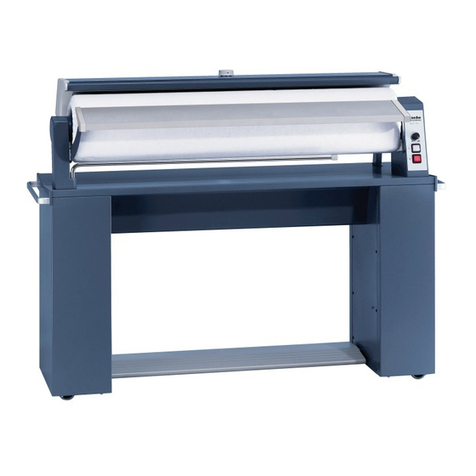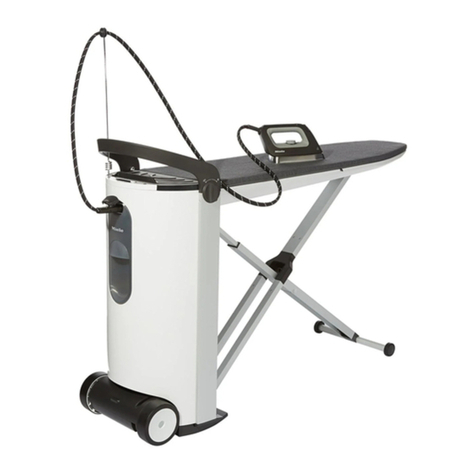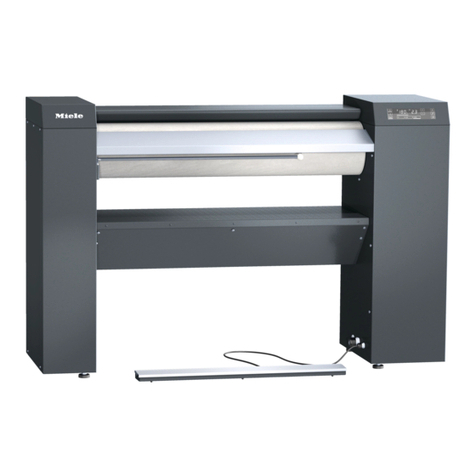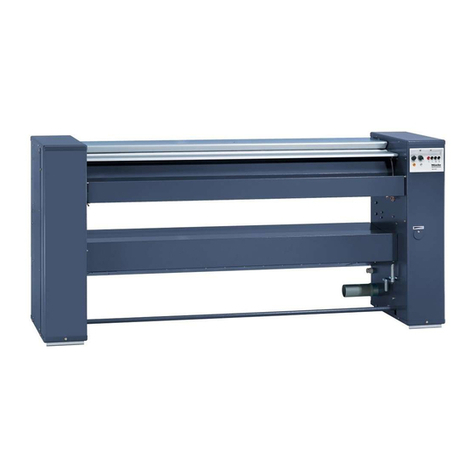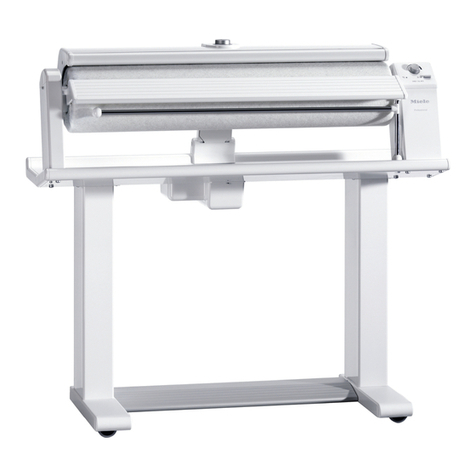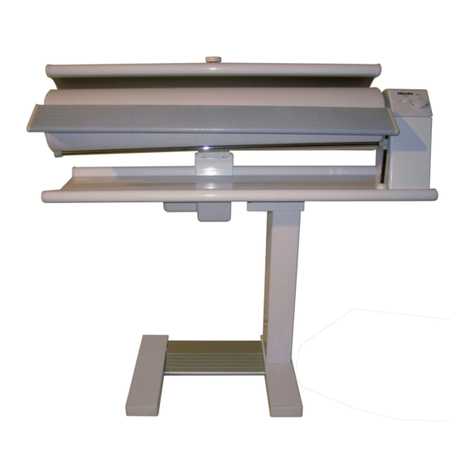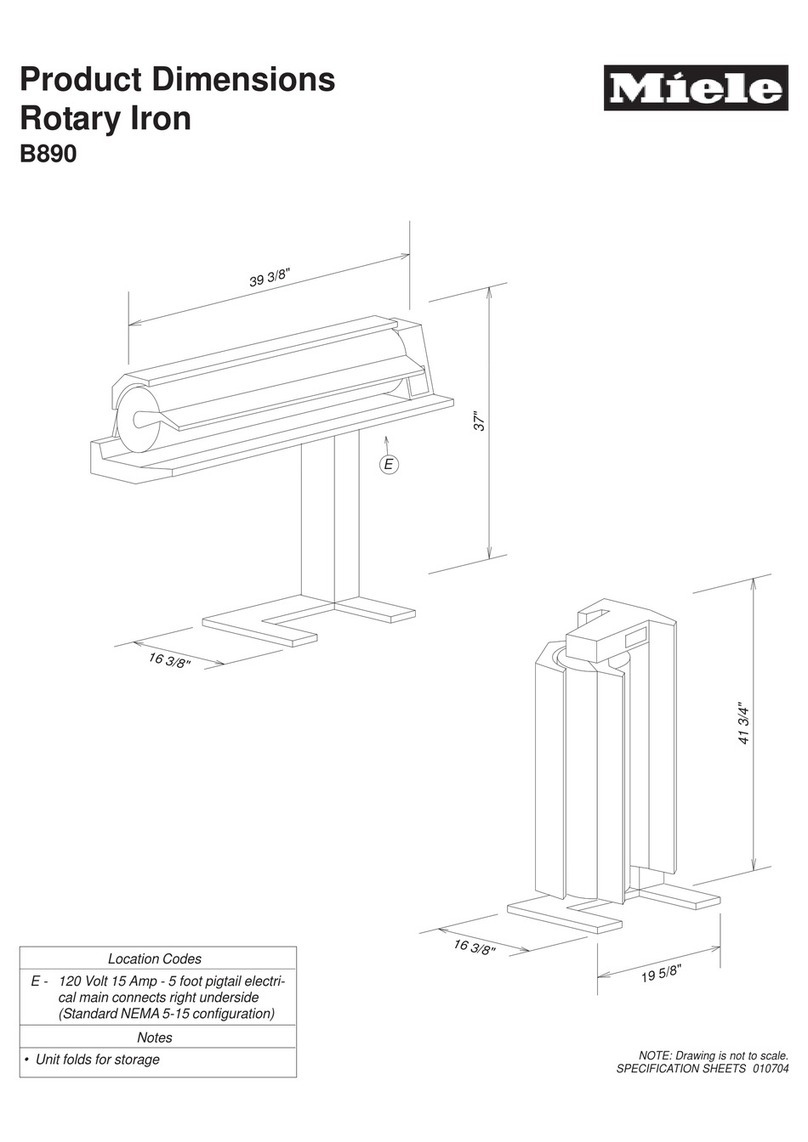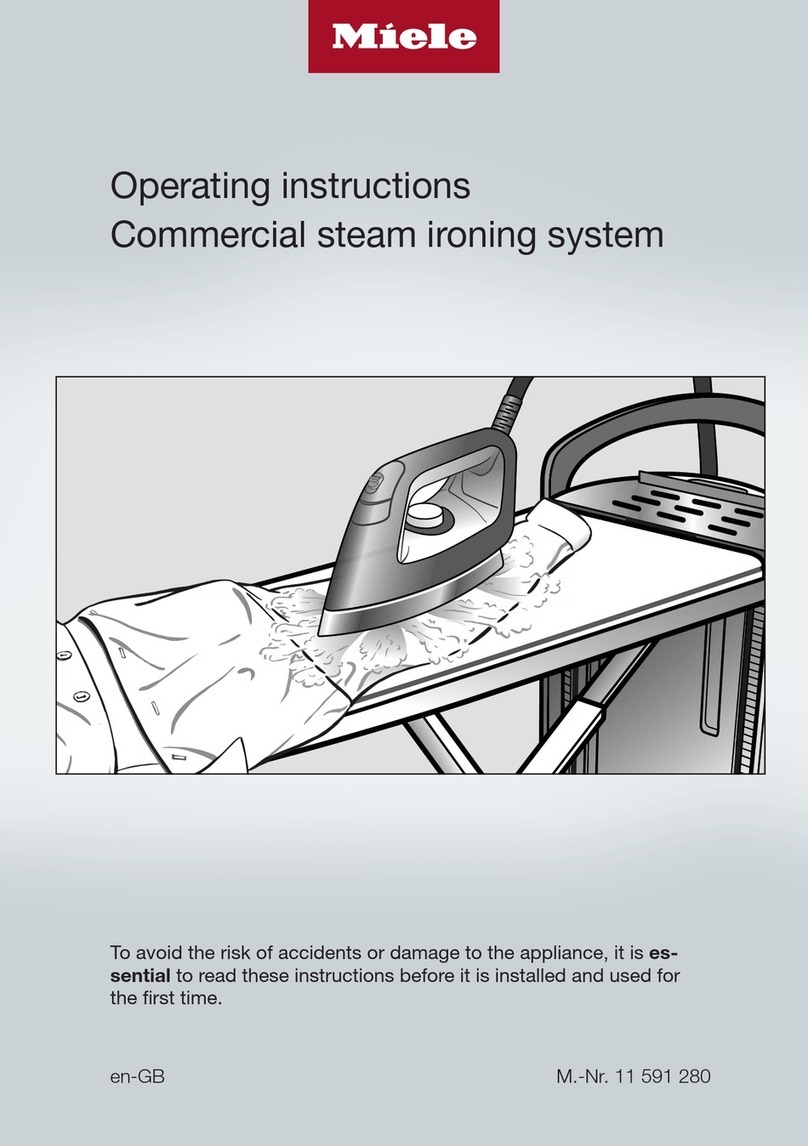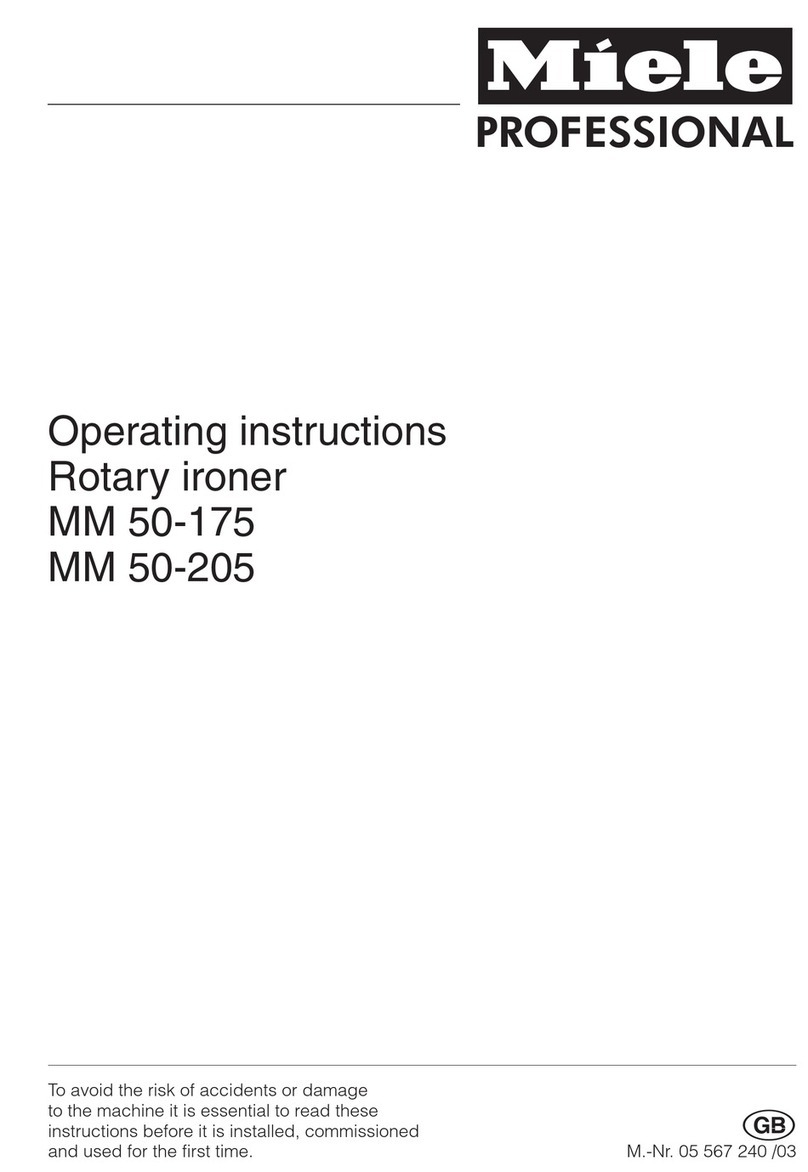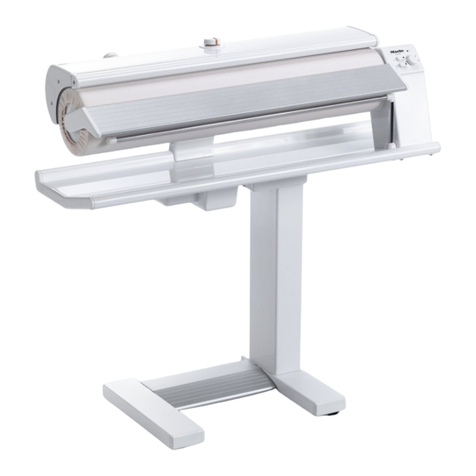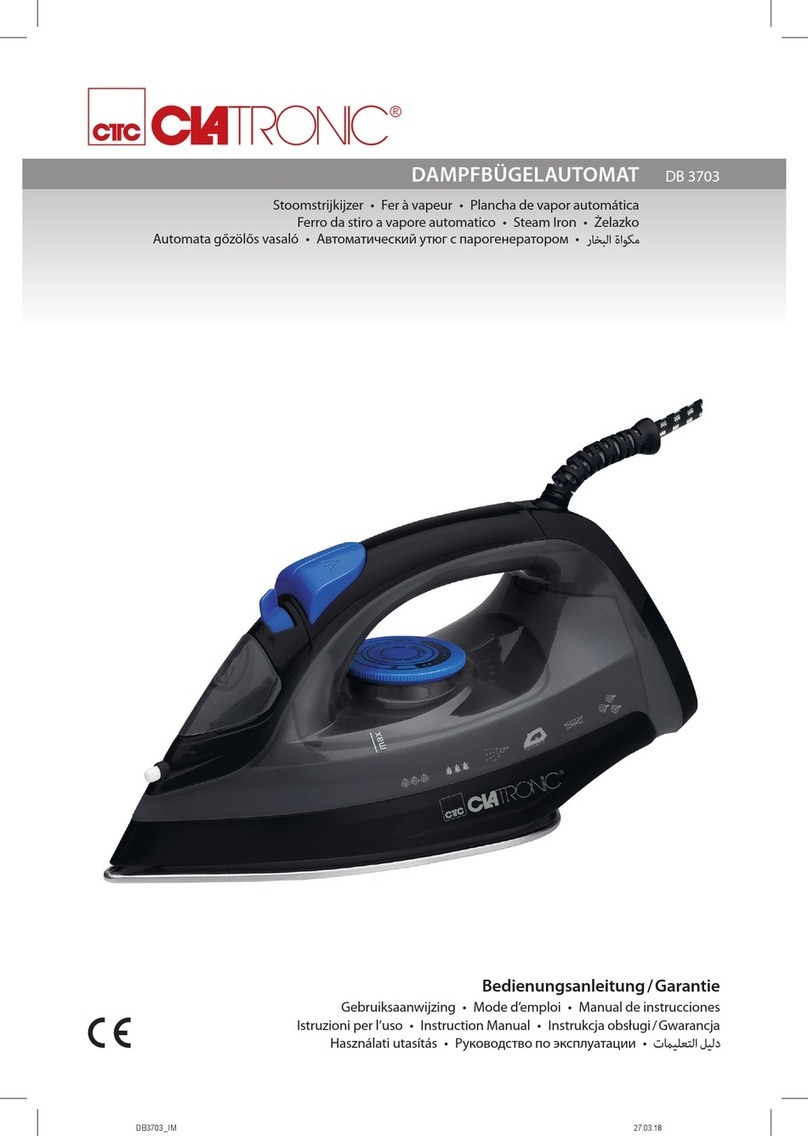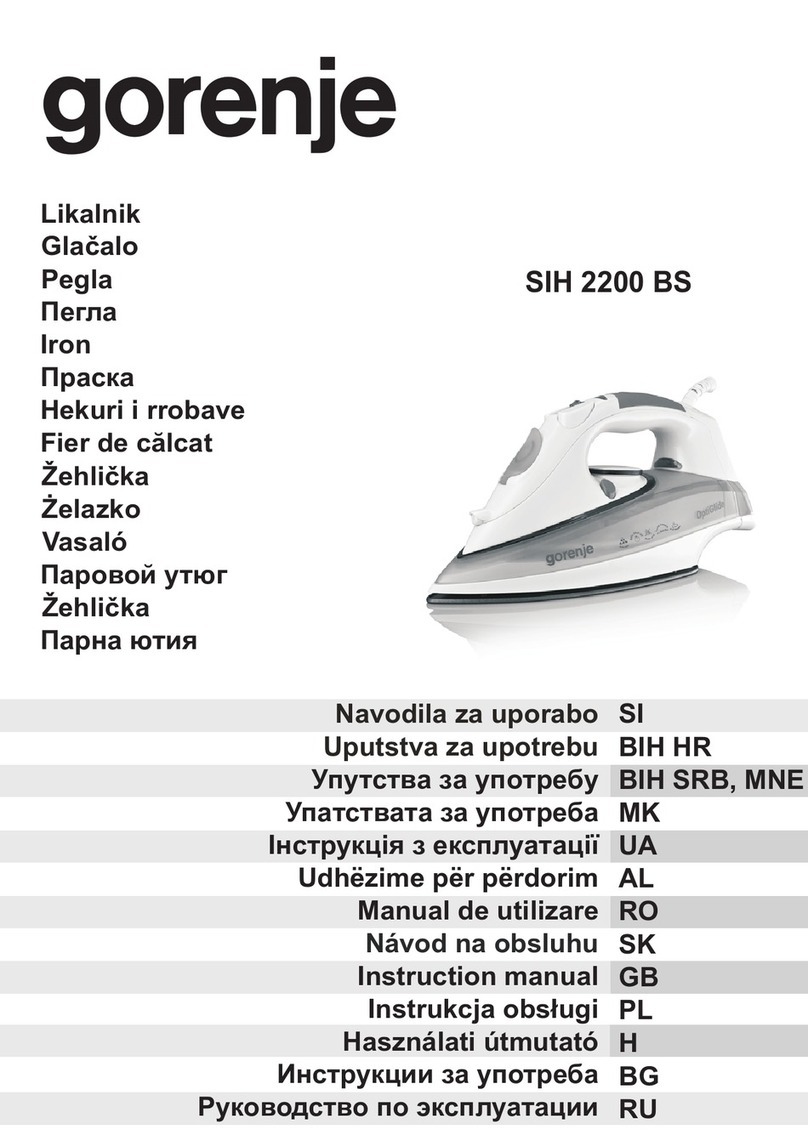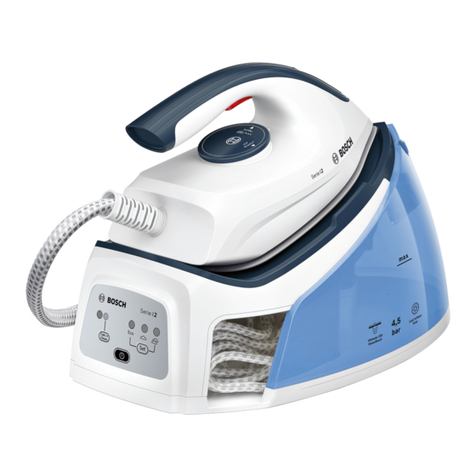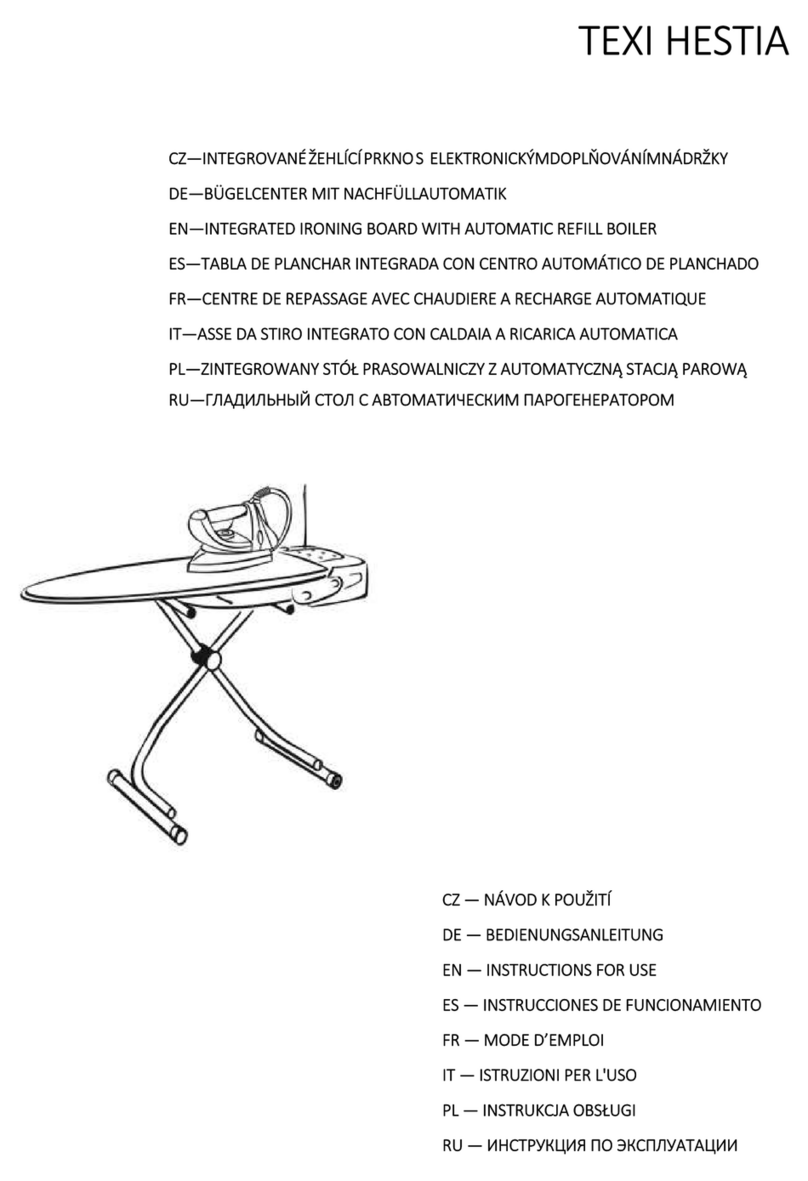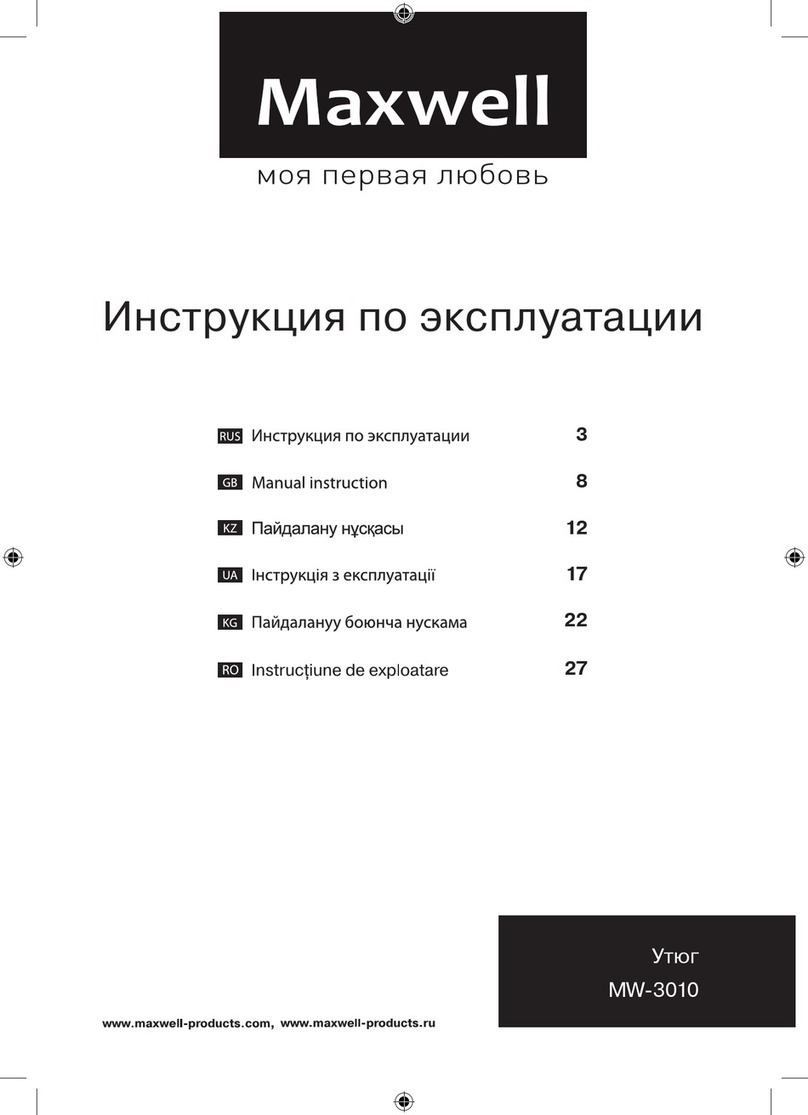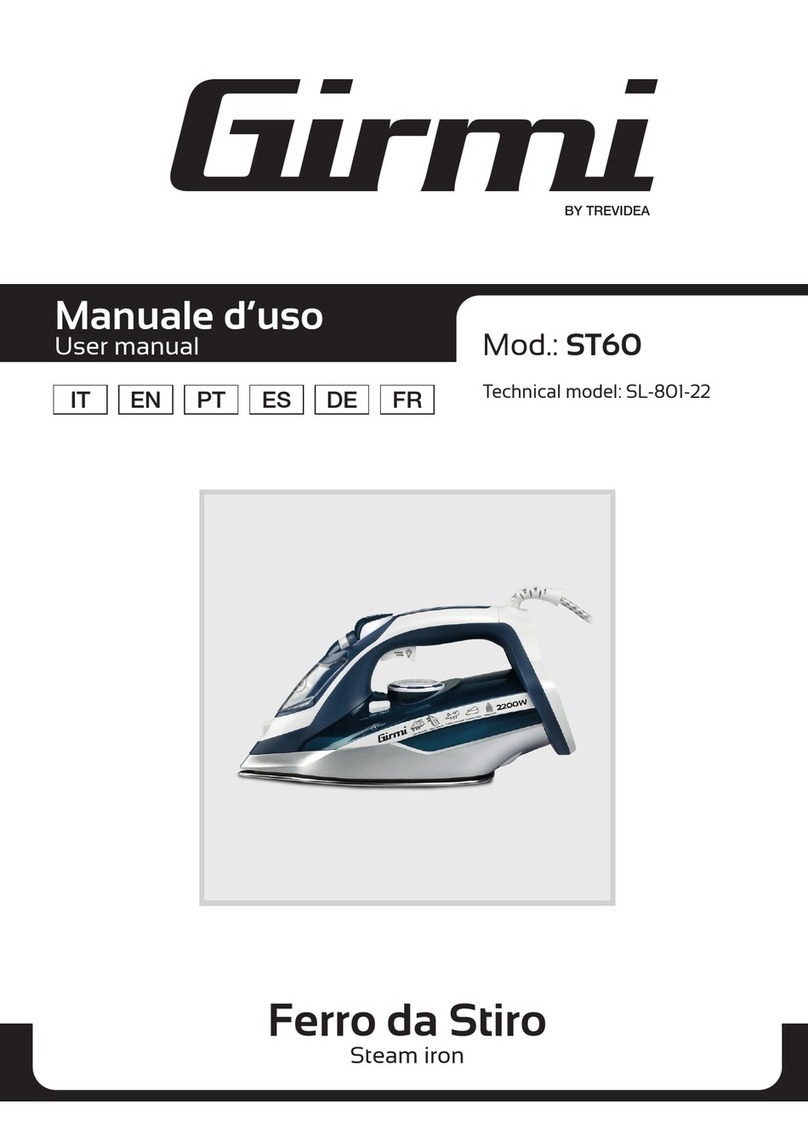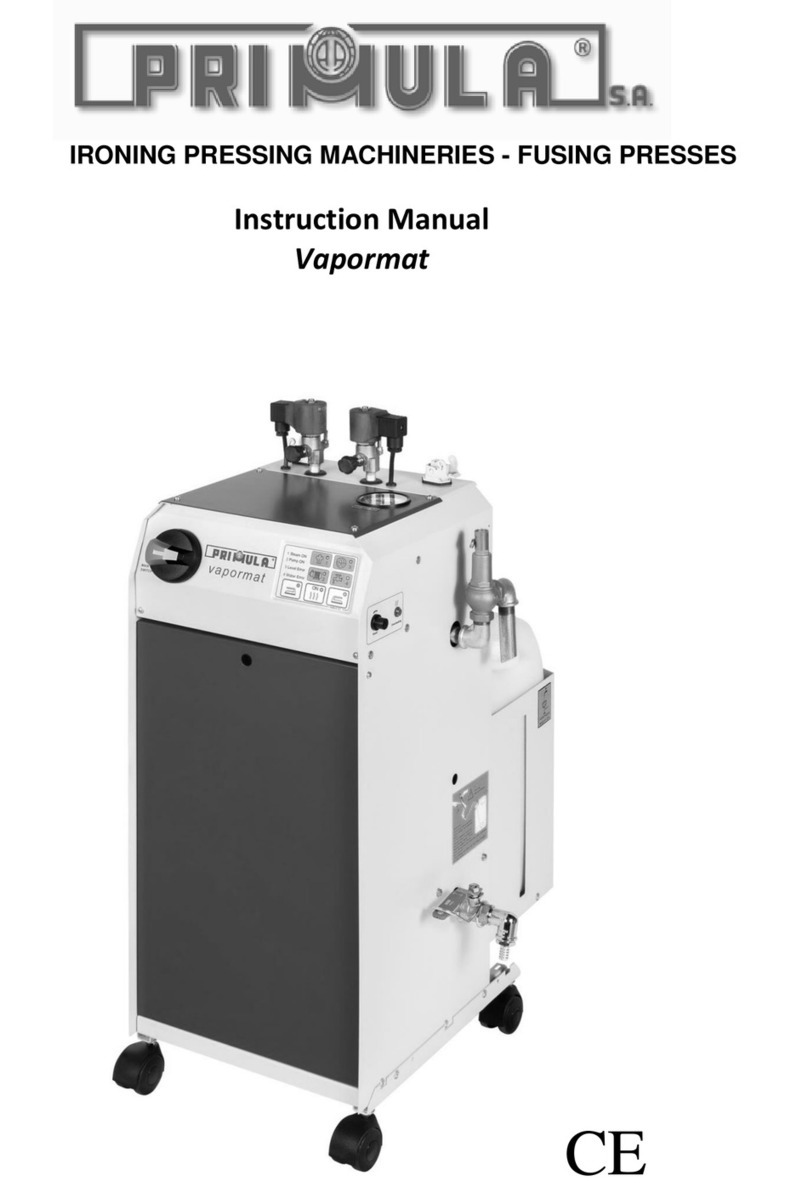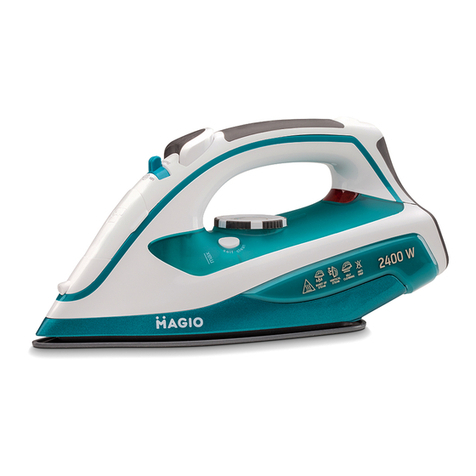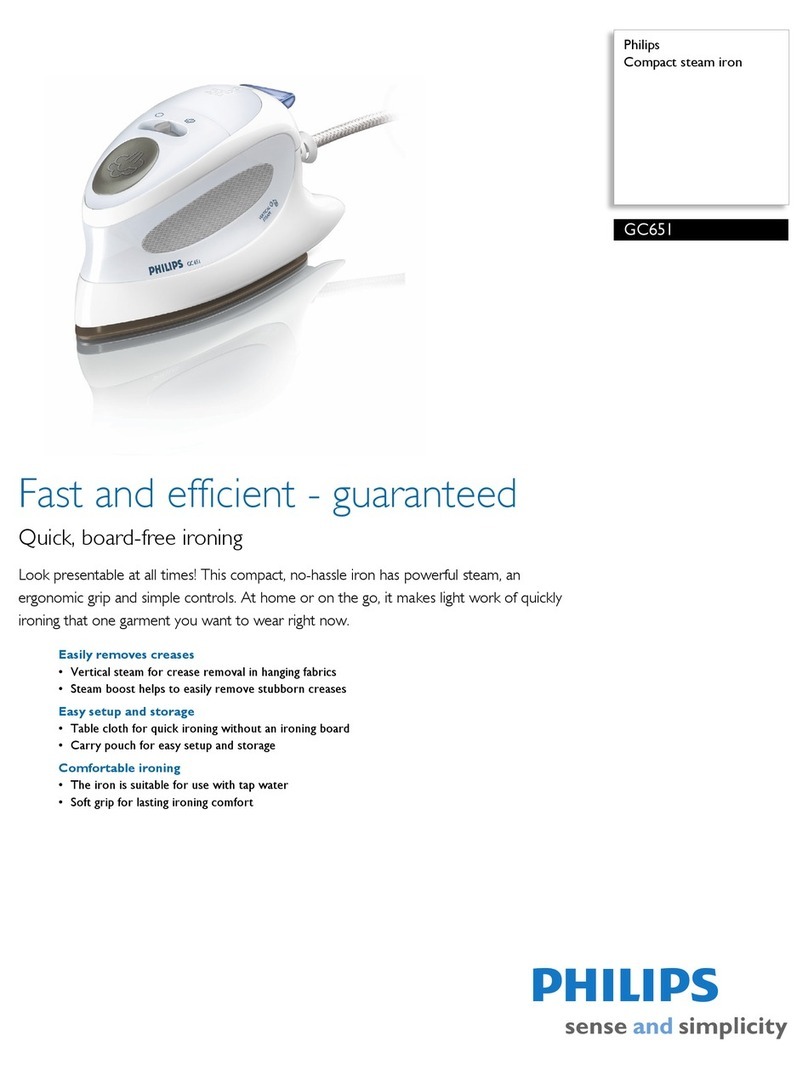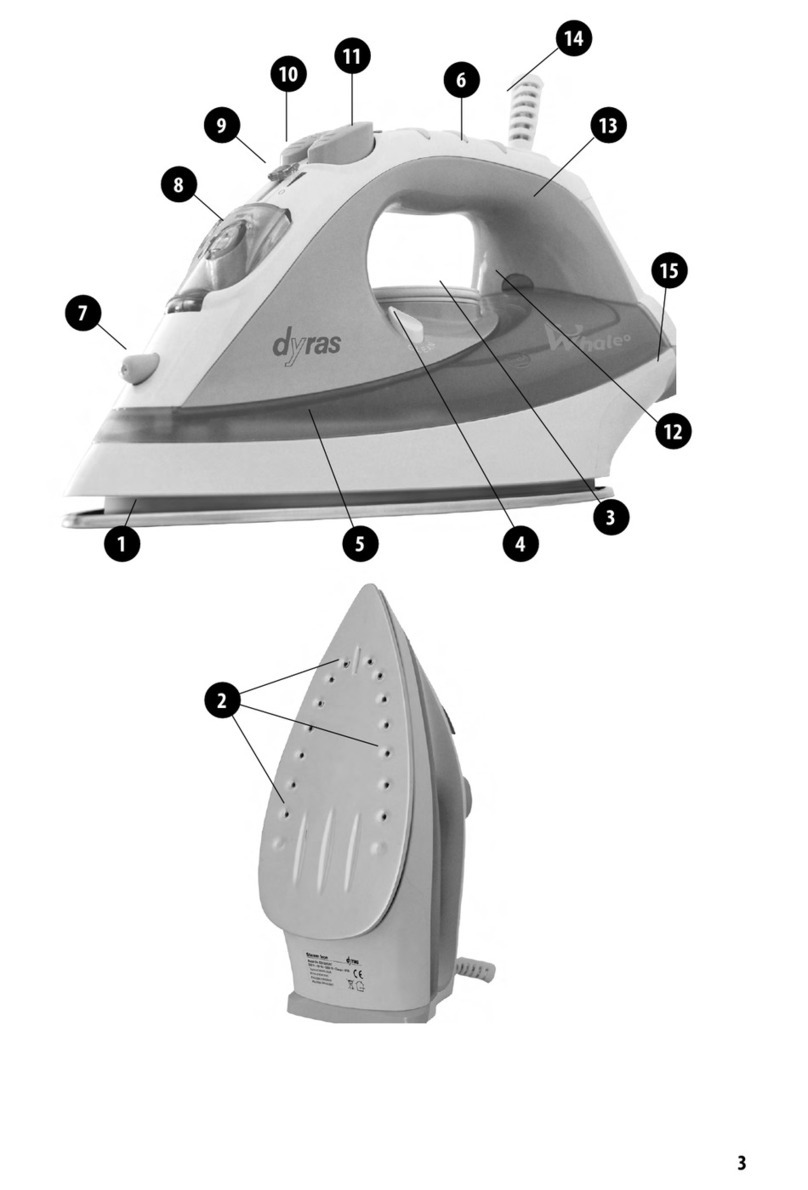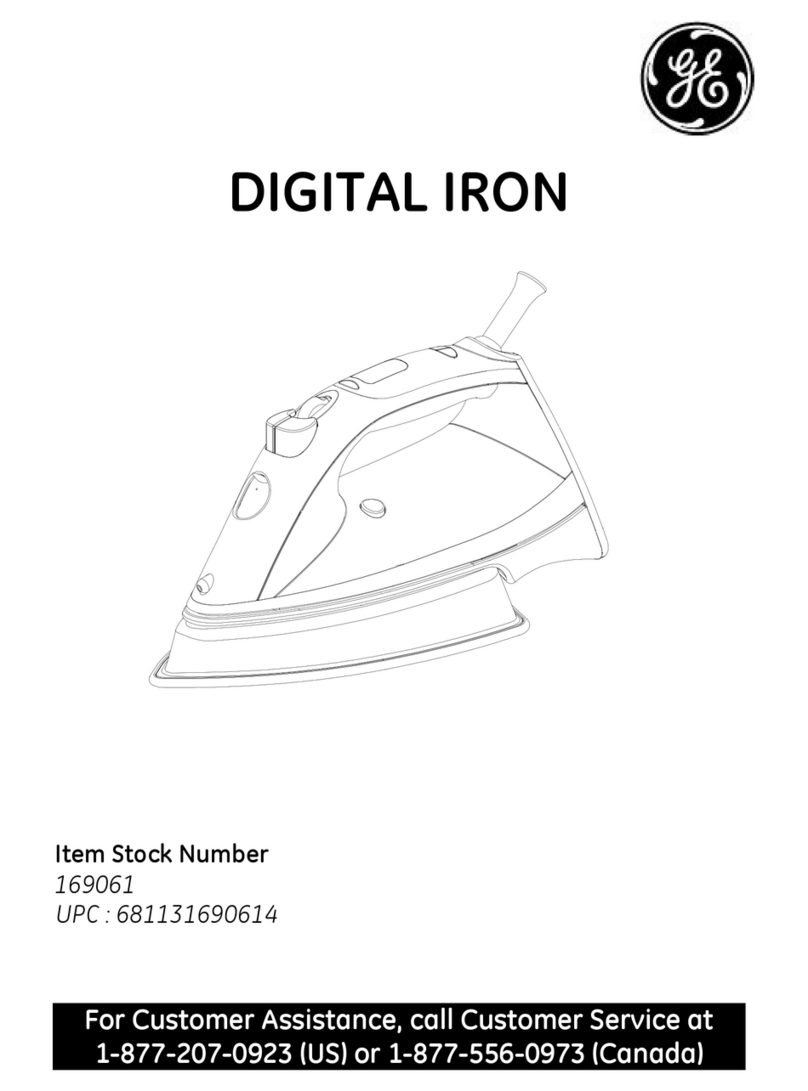
Warning and safety instructions
Read the operating instructions before
using this machine for the first time. This
way you will avoid the risk of accidents and
damage to the machine.
Only iron materials with this ironer which
are suitable for machine ironing and
which were washed in water.
This machine must not be operated in the
same room as dry cleaning machines
which use solvents containing PERs or CFCs.
The ironer should only be used in a room
with a low relative humidity level.
Any removable outer panels must be back
in place, and all moving or electrical parts
shielded before the machine is switched on.
Do not damage, remove or bypass the
safety features, fixtures and control ele-
ments of the machine.
Do not use a machine with damaged con-
trols or with damaged cables. These must
be repaired before it is used again.
Repairs to the machine should only be
undertaken by a suitably qualified trained
service engineer to ensure safety. Unauthori-
sed repairs could be dangerous.
Faulty components must only be exchan-
ged for Miele original spare parts. Only
when these parts are fitted can the safety
standards of the machine be guaranteed.
The electrical safety of this appliance can
only be guaranteed when continuity is
complete between the appliance and an ef-
fective earthing system which complies with
local and national regulations. It is most impor-
tant that this basic safety requirement is regu-
larly tested by a qualified electrician.
The manufacturer can not be held respon-
sible for the consequences of an inade-
quate earthing system.
The machine is only completely isolated
from the electricity supply either when it is
switched off at the wall isolator or when the
mains fuse is withdrawn from the distribution
board.
Never allow children to play on or near
the rotary ironer, or to operate it them-
selves.
When the ironer is heated up with the
heater plate in position, there is an acute
danger of burning, if the edge of the heater
plate is touched on the feed-out side.
When ironing double layered items do not
reach in between the layers to straighten
out the fabric. This is extremely dangerous as
you may not be able to extract your hands on
time. The same applies when ironing gar-
ments with pockets.
Ironers with belt-feed in:
Warning! Do not iron articles with
fringes/tassles, thin straps, ties etc. They
could cause the belt feed-in mechanism to fail
Always keep a fire extinguisher accessi-
ble in the rare event of textiles igniting.
Accessories
Accessory parts may only be fitted when
expressly approved by Miele. If other
parts are used, guarantee, performance and
product liability claims may be invalidated.
M.-Nr. 05372840 4

